Hawos Oktagon Stone Grain Mill
Freshly milled flour has many benefits. We at the Swiss home are proud owners of Hawos Oktagon Stone Grain mill for more than a decade. I have been grinding my own flour for our breads, cakes and pizzas to name a few since I got this grain mill. Admitted this mill is not cheap to buy but in the long run it pays of with the many benefits of freshly ground flour at your fingertips.
Disclosure: This post contains affiliate links, meaning, at no additional cost to you, we will earn a small commission if you click through and make a purchase. Learn more
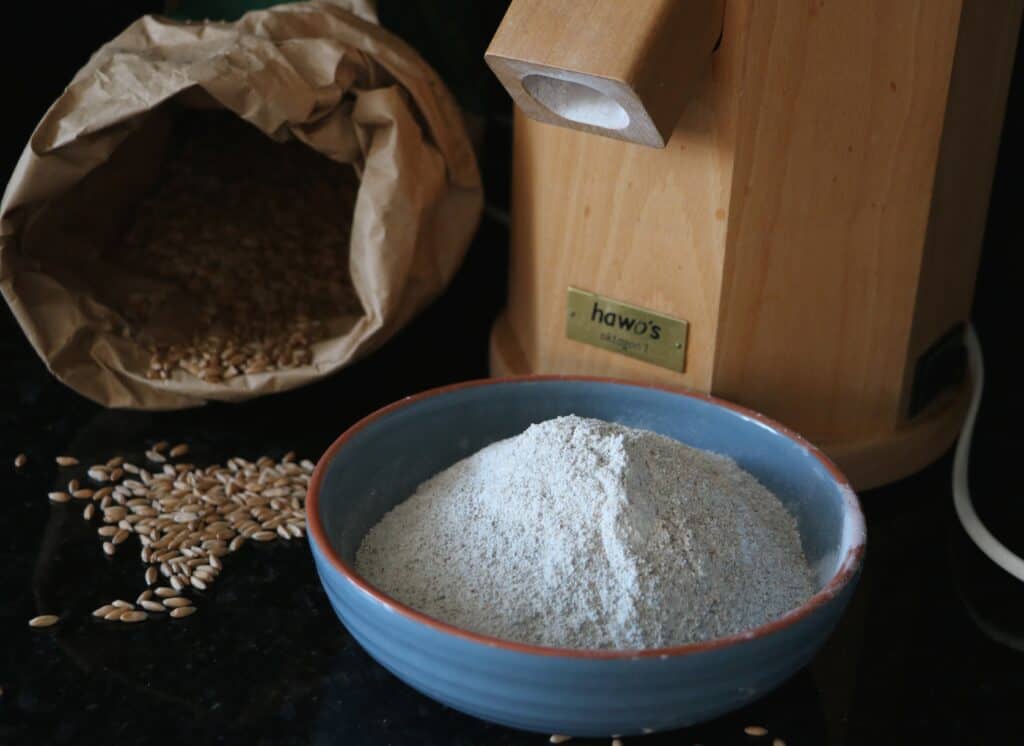
Reasons for choosing our Hawos Oktagon grain mill
After debating many years on getting a grain mill. I finally took the plunge and bought a Hawos stone grain mill, model Oktagon 1, more than a decade back. I have never looked back on it. Prior to that I just had the catalog and was dreaming of one. Due to the high price involved, these grain mills are not the norm in many households. Because, it was a big investment even in those days we were hesitating to get one. Furthermore we would have to easily shell down around CHF 750.- or more for a good one here in Switzerland.
Some of the most noteworthy reasons for choosing Hawos Oktagon stone grain mill were:
- First of all the design- beautiful Octagonal shape
- Due to the use of natural materials like steamed Beech wood and its perfect craftsmanship
- Because of the sound of the grinding noise even with lower settings (low decibels compared to most mills)
- A powerful motor 360/ 600 Watts probably helps for quicker grinding
- And Finally the really compact design and also a decor for my kitchen counter top.
Shop the different Hawos Options here
Oktagon 1 stone grain mill (110 v)
Hawos Classic mill 2 – 220 – 240 V
More Technical information can be found here http:// https://hawos.de/en/product/hawos-oktagon/
You can watch the full demo by clicking below.
Technical Information for Oktagon 1 and Oktagon 2 Mills.
Source: https://hawos.de/en/product/hawos-oktagon
| Mill type Oktagon 1 | |
| Housing | Solid Beech |
| Grinding capacity for (wheat) -fine -course | ca. 125 g/min ca. 250-300 g/min |
| Hopper capacity (wheat) | ca. 1100 g |
| Grindstone ø (corundum ceramic stones) | 100 mm |
| Weight | 8.8 kg |
| Motor output | 360 W |
| Mains voltage | 230 V (110V available) |
| Height allowance for bowls | 16 cm |
| Footprint Dimensions(W x D x H) | 200 x 200 x 410 mm |
| Surface treatment | Linseed oil varnish |
| Warranty | 10 Years |
| Price in Germany | Eur 400.- |
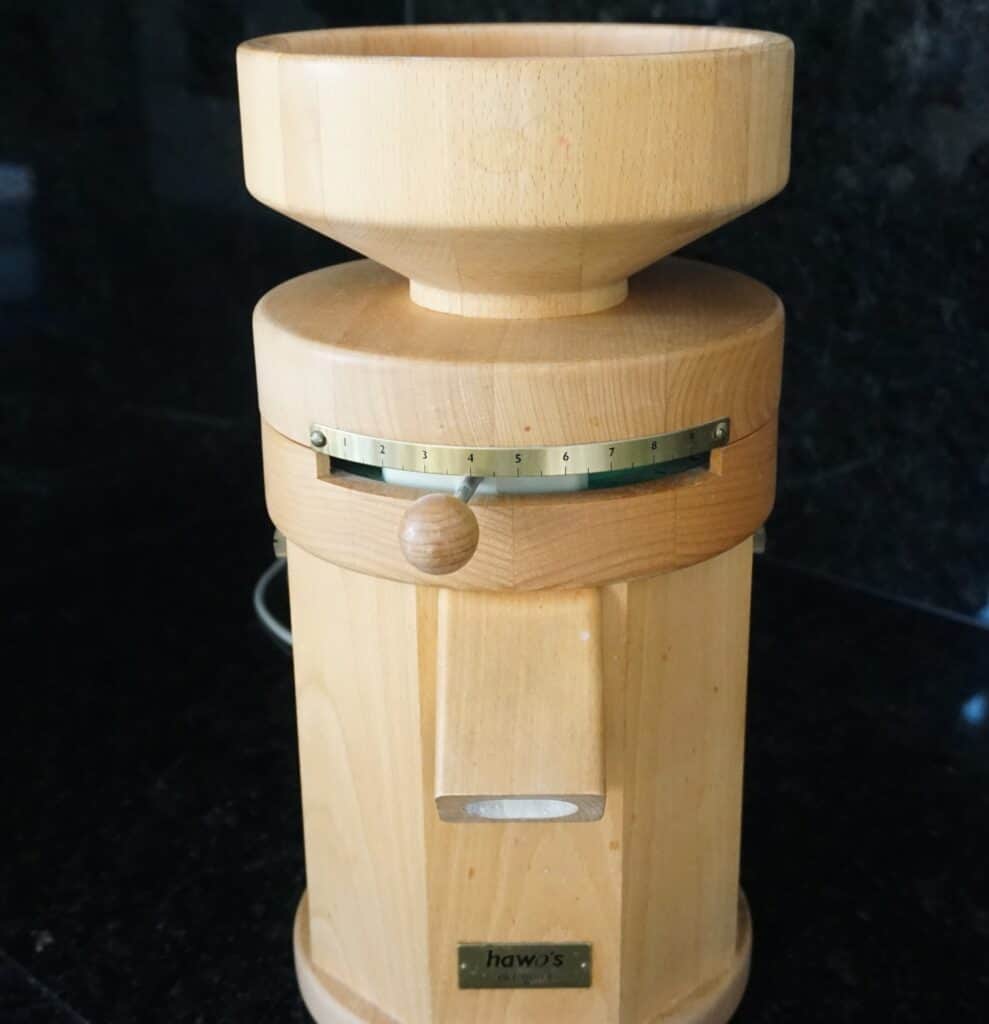
Operating Instructions for the stone mill
1. First Connect the mill to the power supply
2. Next Adjust the Fineness setting
You can set the fineness of the mill feed between 1 and 9 using the adjusting lever. First of all its important to note that while changing the setting from 9 to 1 or a lower setting the mill should be either be on or the grinder must be empty.
In case you wish to increase the fineness above the level specified in the table, the result of the flour will be super fine. Because this increases the risk of the grindstones clogging take a look at the table given below. Further more, its better to pay attention to the milling noise. If the sound diminishes considerably, its probably due to the grinding stones beginning to clog. Therefore adjust the lever to coarser setting and continue the milling process.
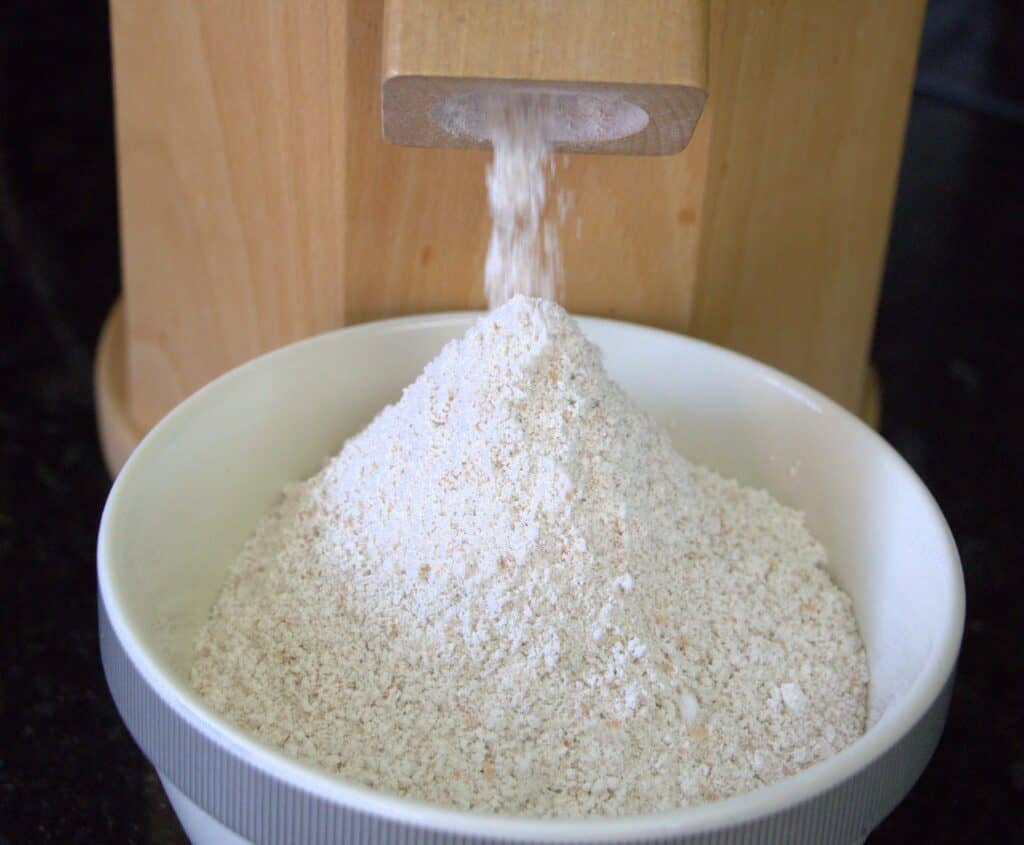
3. Turn off the mill once all the grain has been ground.
You will hear the grindstones rubbing against each other as a result of no more grains in the mill.
“This is because of the high degree of precision, the threading for the fine setting always has to have a small amount of play. This small amount of play is neutralized when the pressure from milling is exerted on the two grindstones. “
Due to the fact that different grains have their own unique hardness. Therefore they will exert a different milling pressure on the grinder. For this reason the manufacturer recommends different settings for different grains.
Table for different grains feed in Hawos stone grain mill
Mill Feed for different grains
| Mill Feed | Setting from Level |
| Wheat | 1 |
| Rye | 1.5 -2 |
| Spelt | 1.5-2 |
| Barley | 2.5 |
| Oats | 2.5 |
| Millet | 1 |
| Sweet corn | 0 |
| Darum wheat | 0 |
| Rice (not parboiled) | 1 |
| Buckwheat | 1 |
| Green spelt | 1 |
| Flax seed (mix 1:1 with wheat) | 2 |
| Chick peas | 1.5 |
| Green Peas | 1.5 |
| Nutritional yeast flakes | 1.5 |
| Quinoa | 0.5 |
| Amaranth (slowly pour into the funnel) | 0 |
Why use these guidelines
Because the different types of grain differ considerably with respect to their fat and fibre content, endosperms etc. The above table gives the guideline as a result of extensive testing which was carried out by Hawo’s. Furthermore the values given are just approximate and are dependent on the moisture content of the grains in question.
Conclusion
Why was Hawos grain mill my choice ?
Hawos stone grain mill has been the winner of stone mills test in its category according to German consumer tests. Therefore, I would say that its worth the investment. I have been using this stone mill since more than 12 years and had no problems with so far. Moreover I bought this mill almost new yet pre- owned still second hand technically and at that time that was the cheapest I could get for that time. I paid CHF 600.- for an almost new one. Yet another good reason to have one is the many benefits we have reaped due to grinding our own flour. That deserves another blog post by itself. So stay peeled for the next post coming up on the benefits of milling your own flour.
PIN IT FOR LATER
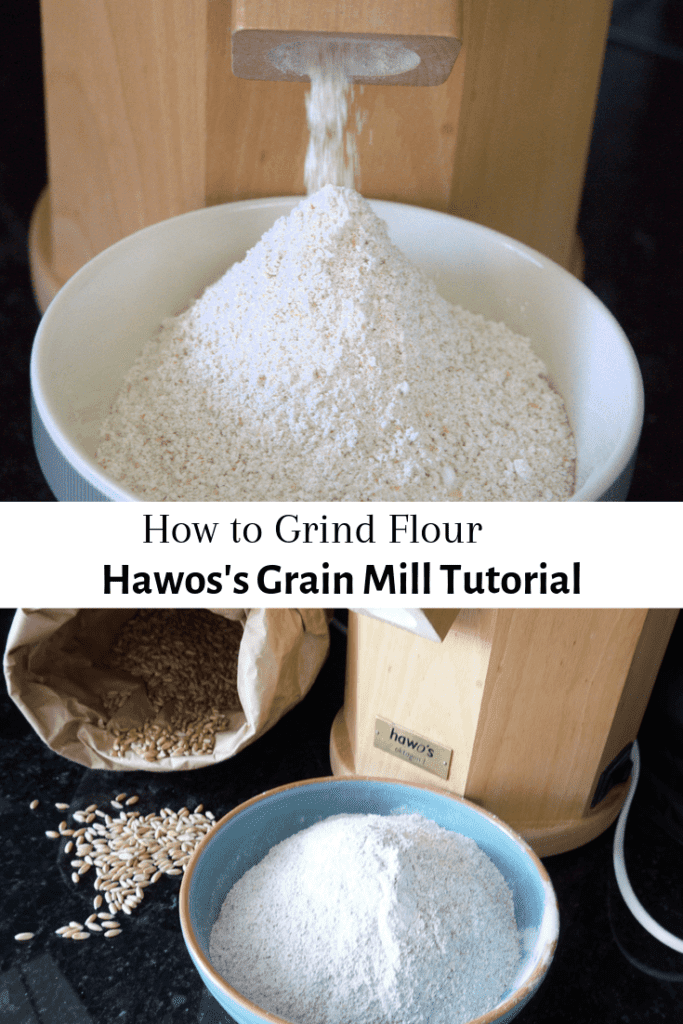

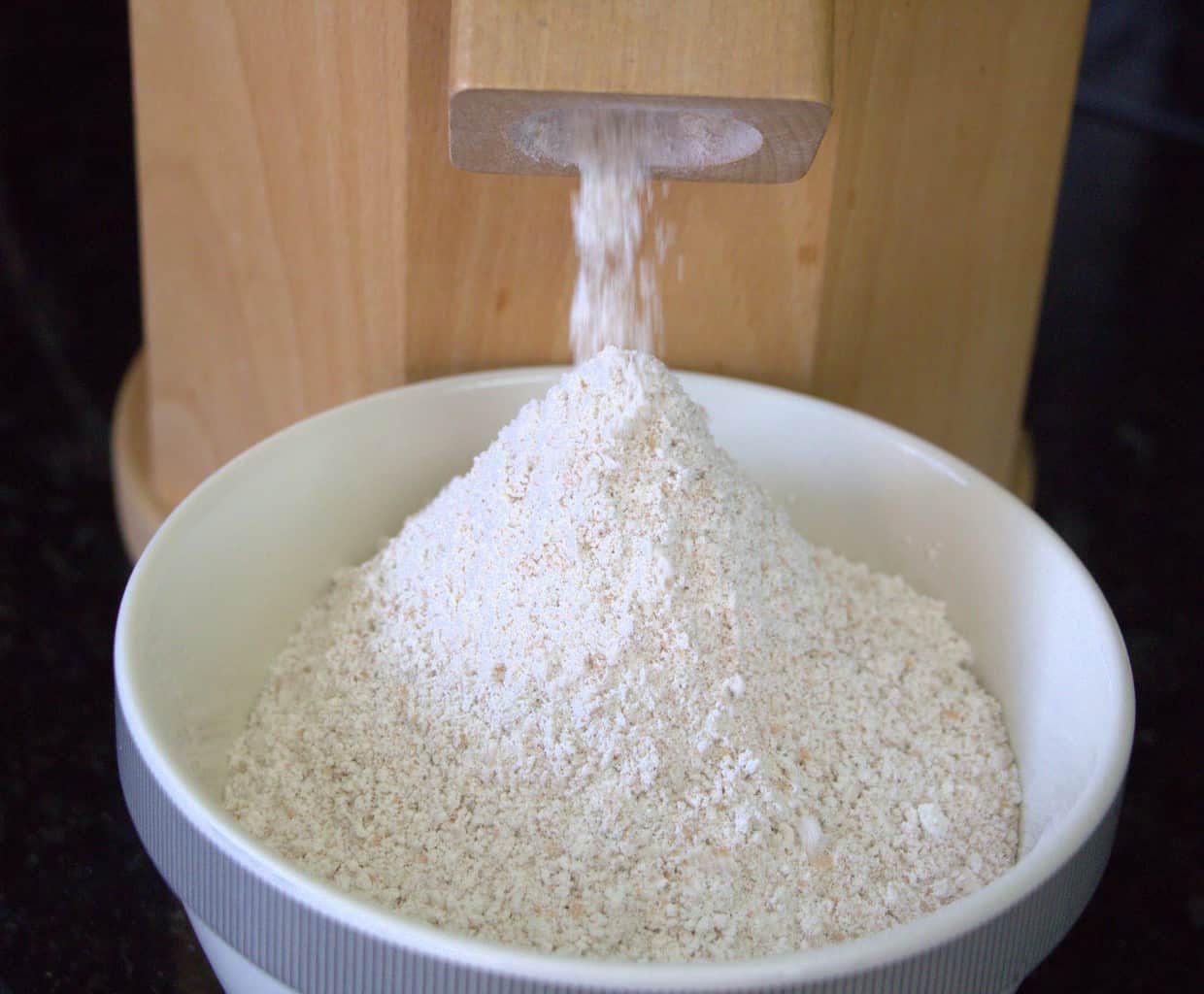
9 comments
I am interested in grinding my own grains. I have a Hawo’s mill and would like to learn more about milling.
This has been the best purchase I ever made. I use it almost everyday. Hawos is really very good, mine is almost 15 years old now. Check out my video to it too.
good
Thanks. We really love this mill.
Hi, we bought Hawos Queen 1 We are figuring out the use. Have you tried milling wheat for Chapati / Roti flour? How was your experience?
Yes, we have used it for milling wheat for Chapati. It works very well. I used the setting 3 for finer flour you can go as low as 2, but it takes longer. It won’t be as fine as shop bought flour, as Industrial flour is usually sieved. You will love the taste of freshly ground flour for your Roti’s. I only use milled flour for Chapati’s.
Recently I started grinding rice too and it works. I will post a video soon on how to clean the mill on the youtube channel. It has to be edited, but I am too busy now.
Thank you so much for your reply Chitra. We have tried the mill for a few different grains and lentils (chana dal, urad dal etc.). The chapati atta from wheat though did not go that well as there was a lot of fiber left in the atta. The reason being wheat grains were of ‘ soft wheat’ variety. Perhaps using a hard wheat variety such as durum may give us a different result. Unfortunately there no suppliers for a smaller scale purchase here in the Netherlands. Could you kindly share the links to the supplier that you use in your blog?
I usually buy mine from Germany and they ship it here. I can give you their address. http://www.cosmoveda.de. I also buy all my Indian spices, lentils etc from there. They ship all over Europe. Since you are within EU, there may be no customs duty. Their quality is good and its all organic too. Don’t know about their wheat, since I stopped using wheat long back. But give it a try. Prices are also OK. I also buy my grains in Switzerland from the health food stores. You can try the Health food stores in NL. Surely they have good quality. Rapunzel and Demeter are top quality in everything related to food within Europe.
Thank you for the detailed information!! Indeed helpful!